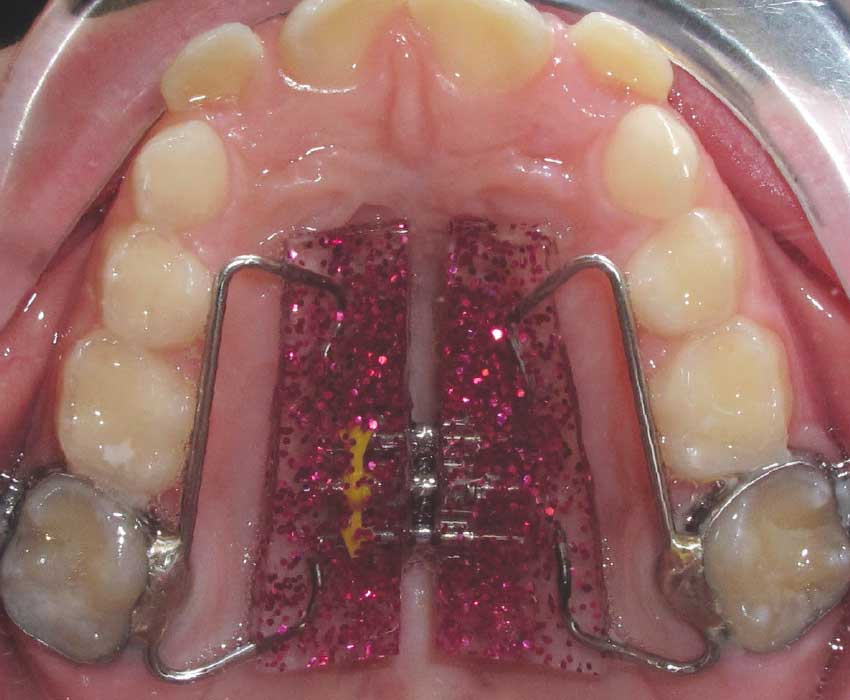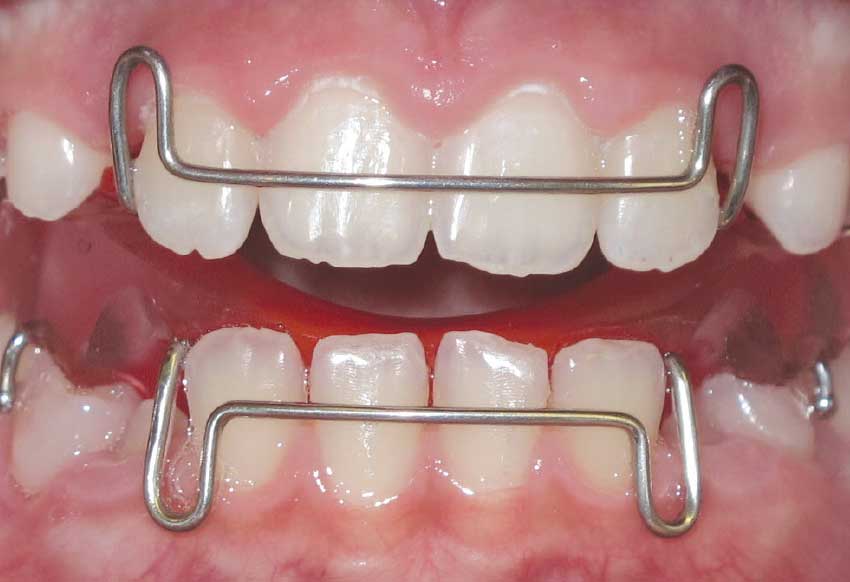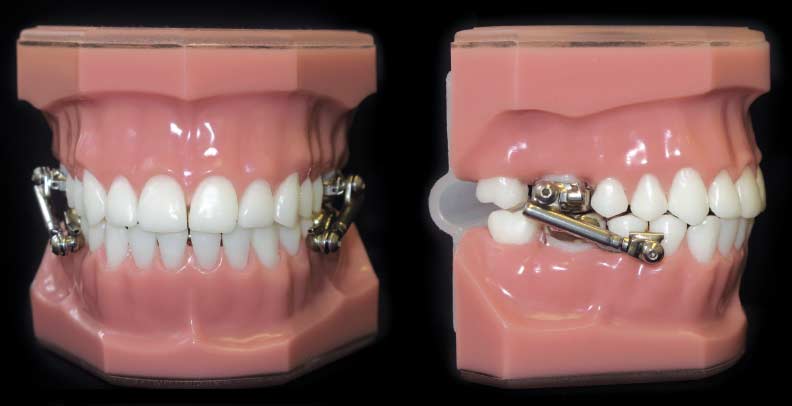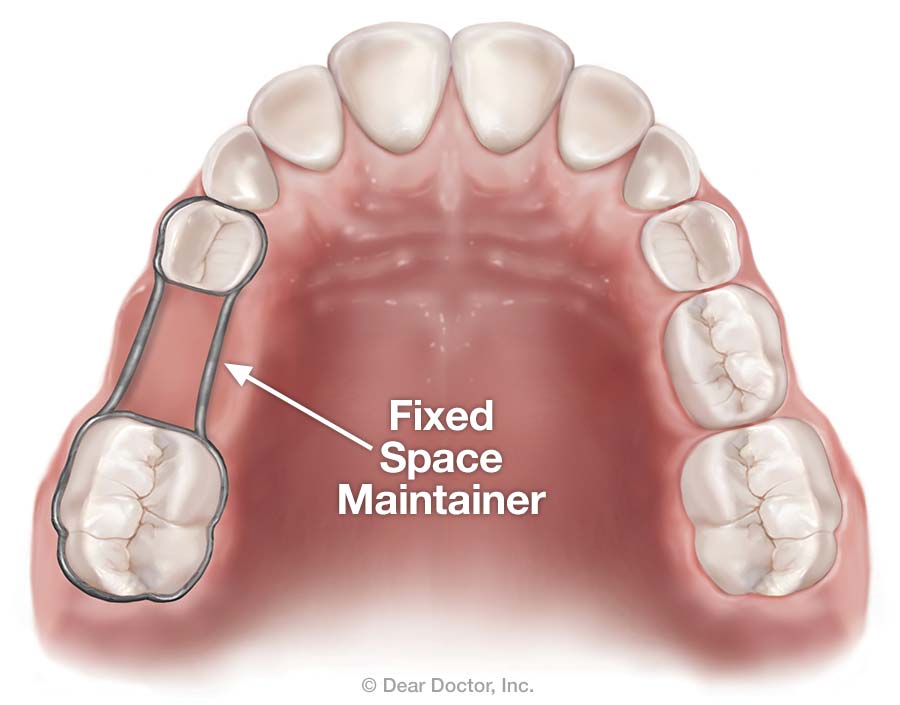Interceptive Orthodontics
Timely intervention can make treatment easier and more effective
Take a look at any group of adolescents, and chances are you'll see some with orthodontic appliances like braces or clear aligners. In the United States alone, some 4 million teens and tweens get teeth-straightening treatment every year — and that doesn't count the growing number of adults who benefit from orthodontics. While most orthodontic treatments can be done at any age, there's one that is specifically for children whose mouths are still growing: this method, called interceptive orthodontics, has been steadily gaining acceptance in recent years. If you haven't heard about it, you might be missing out on something that could improve your child's experience and outcome with orthodontic treatment.
With interceptive orthodontics, treatment starts earlier than it would via traditional orthodontic methods — as early as 6 to 10 years of age. (By contrast, standard orthodontic treatment begins around age 10-12, when most of the permanent teeth have come in.) Also, interceptive treatment itself doesn't necessarily involve braces; instead, it can employ a number of other techniques, ranging from special devices to behavioral modification. Afterward, traditional braces or other appliances are often (but not always) needed.
The goal of interceptive orthodontics is to influence the growth and development of the jaws (or other oral structures) in a way that that would be more difficult or impossible to do at an older age. It is effective only while the body is still growing — that's why it begins early, and why it isn't recommended for adults. But when done at the right time, it offers results that otherwise couldn't be achieved without longer or more invasive treatments: namely, a healthier smile with better aesthetics and improved function.
Guiding Jaw Growth to Avoid Extractions
One common situation where it may be advantageous to consider interceptive orthodontics is when the jaws aren't quite large enough to accommodate all of the permanent teeth. When those teeth begin coming in, they may erupt (emerge from the gums) in poor alignment, or too close to one another. This kind of malocclusion ("mal" – bad; "occlusion" – bite) results from too much crowding and not enough space in the jaw. It can not only make it harder to maintain good oral hygiene, but may also make you unhappy with the appearance of your smile.
If treatment is needed, the traditional method would be to wait until most of the permanent teeth have erupted, commonly around age 10-13. One or more teeth could then be extracted to reduce crowding, and braces would be used to improve the smile's appearance. But interceptive orthodontics takes a different approach: instead of waiting for the permanent teeth, a child at age 7 to 9 is fitted with a special appliance called an expander. These devices gradually widen the developing bones of the jaws, creating enough room to accommodate all of the teeth and eliminating the need for extractions.
 |
| A palatal expander is used to widen the upper jaw and create more space for crowded teeth. |
 |
| After months of using the palatal expander, enough space has been created to properly align the upper front teeth. |
A palatal expander is an appliance that widens the upper jaw (maxilla). It is the most common type of expansion appliance used by orthodontists. It works by taking advantage of the body's natural growth patterns. The upper jaw is formed of two bones that become fused together in the middle of the palate (the roof of the mouth) — but the fusion isn't complete until after puberty. The expander is a custom-made appliance that is fitted on the upper teeth near the back of the mouth. Made in two halves, its left and right sides are joined by a sliding track that is controlled by a screw. When the screw is given a turn (once or twice a day), the device exerts gentle outward pressure on the teeth, pushing the upper jaw bones very slightly apart at the palate's midline. Because these bones are growing so rapidly, new bone cells quickly fill the gap that is created. Since the patient is growing and the bones are so pliable, the expansion occurs with minimal pain or discomfort.
Palatal expanders are typically worn 6 to 12 months, depending on the amount of expansion needed. Afterward, a retainer may be needed to stabilize the developing bone. Often times the expansion approach can eliminate the need for tooth extraction. Finally, when most of the child's permanent teeth have come in, the next stage of orthodontic treatment can be started, if it is determined to be necessary.
Helping Form Follow Function
Palatal expanders are among the most common tools in the orthodontist's kit, but there are many others as well. A functional appliance is another kind of interceptive device. The purpose of these devices is to influence muscle activity and bone development in a growing child's jaws, with the eventual goal of reshaping and repositioning the jaw bones. While functional appliances differ in appearance, they all work by re-directing the pattern of jaw development to promote or restrict a certain growth pattern. In some instances, using a functional appliance at the right time may avoid the need for more complex treatments such as extractions or even orthognathic (jaw) surgery.
 |
| A Herbst appliance helps the lower jaw develop in a forward direction to correct an overbite. |
Two commonly used functional appliances designed to deal with a more serious overbite (a situation where the top teeth greatly overlap the bottom ones) are the Herbst appliance and the twin block retainer. The Herbst appliance utilizes two small metal hinges to connect the top and bottom jaws; the action of the hinges encourages the lower jaw to grow in a forward direction. The twin block retainer consists of an upper and lower part worn on the top and bottom teeth; when the mouth closes, the blocks come together in a way that pushes the lower jaw forward. There are a number of other appliances that can accomplish the same effect, each designed to promote or restrict jaw growth.
Simple Interceptive Treatments
 |
| A metal space maintainer will hold open the space created by the premature loss of a baby tooth until the permanent teeth start to erupt. |
Interceptive orthodontic treatment doesn't always involve the movement of teeth or jaws. Sometimes it can be as simple as preserving space for future teeth. An example is the use of a "space maintainer." This is a small device that is sometimes used where a primary (baby) tooth has been removed, or has come out prematurely. Commonly made of acrylic or metal, it holds a place for a permanent tooth to come into. In many situations, keeping this space open allows the permanent tooth to erupt in an optimal location, and makes re-positioning it unnecessary. This is a common situation where an ounce of prevention is worth a pound of cure.
In some cases, interceptive treatment may not involve appliances. For example, thumb or finger sucking habits that go on for too long (much past the age of three) can cause serious bite problems — including an open bite, where the top and bottom teeth don't meet, and open space is seen in the front of the smile. But for young kids, calendar charts and stickers may provide enough motivation to change the habit: a simple form of behavioral modification. If these aren't successful, an appliance like the tongue crib can be made to eliminate the harmful habit.
Extraction of Baby Teeth
While tooth extraction is often avoidable, at times it may be the best option. For example, removing certain baby teeth at the right time could allow a permanent tooth to erupt properly. One example where this can be advantageous is in attempts to prevent canine teeth (also called cuspids or eye teeth) from becoming impacted — meaning that other teeth or anatomical structures interfere with them, preventing them from emerging into the bite in the correct position.
Orthodontists can often predict when a developing adult canine is going to become impacted by analyzing x-rays. Done at the appropriate time, removal of baby teeth can prevent the adult canines from becoming impacted, and reduce the need for more invasive treatment later on.
The Importance of Early Screening
Not all children who could benefit from orthodontics also require interceptive treatment; however, it could help perhaps 10 to 20 percent of the kids who come in for evaluation. Sometimes — especially when more complex problems are discovered — the decision to begin interceptive treatment is an easy one to make. But many times, it's not so clear cut. That is why it is important to meet with an orthodontic specialist to discuss the pros and cons of starting early versus deferring treatment.
The advantages of early intervention are numerous. Treatment started at the appropriate time can have a positive impact on facial growth, tooth development, airway management and overall self esteem. The changes that interceptive orthodontic treatment can provide are drastic and can really change people's lives.
As with most things with kids, timing is everything. That's why a number of professional organizations, including the American Association of Orthodontists (AAO), recommend that all kids have their first orthodontic screening at age 7. Many won't need orthodontic treatment at this age... or even in the future. But those who do may get the chance to take care of some problems early — when it may not be possible later on.
An orthodontic exam, including a panoramic x-ray and a thorough evaluation, is a quick and painless procedure. If you or your dentist suspects a possible problem with tooth or jaw alignment — or if that young smile looks like it needs some help — it's always best to get it checked out early. Taking advantage of the special techniques of interceptive orthodontics at the right time can save many problems later on.




